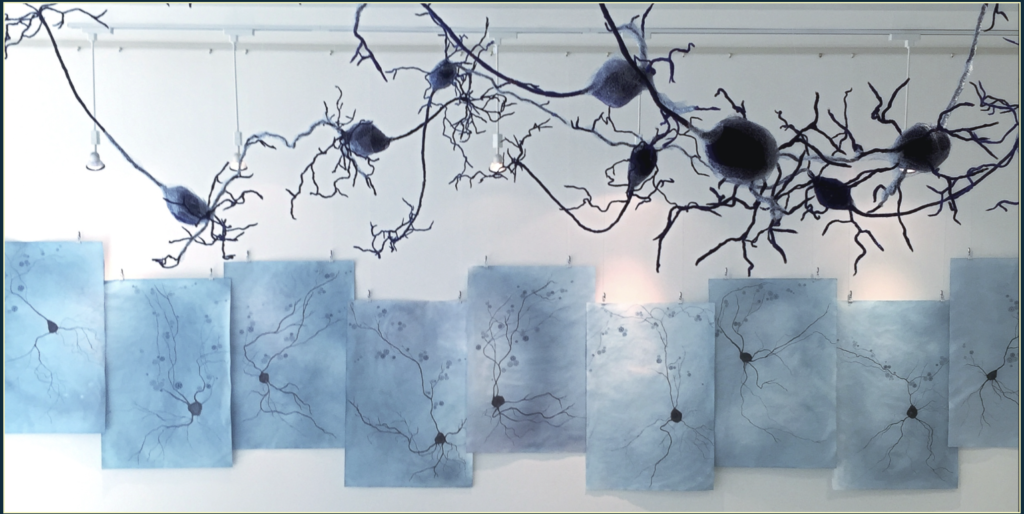
It’s TextileX Month in Portland, Oregon, and artists sewed, embroidered, arranged and organized fantastic, compelling installations across the City of Roses. The theme was regeneration, something that – given the right environment – our brain cells and noggins are known to do.
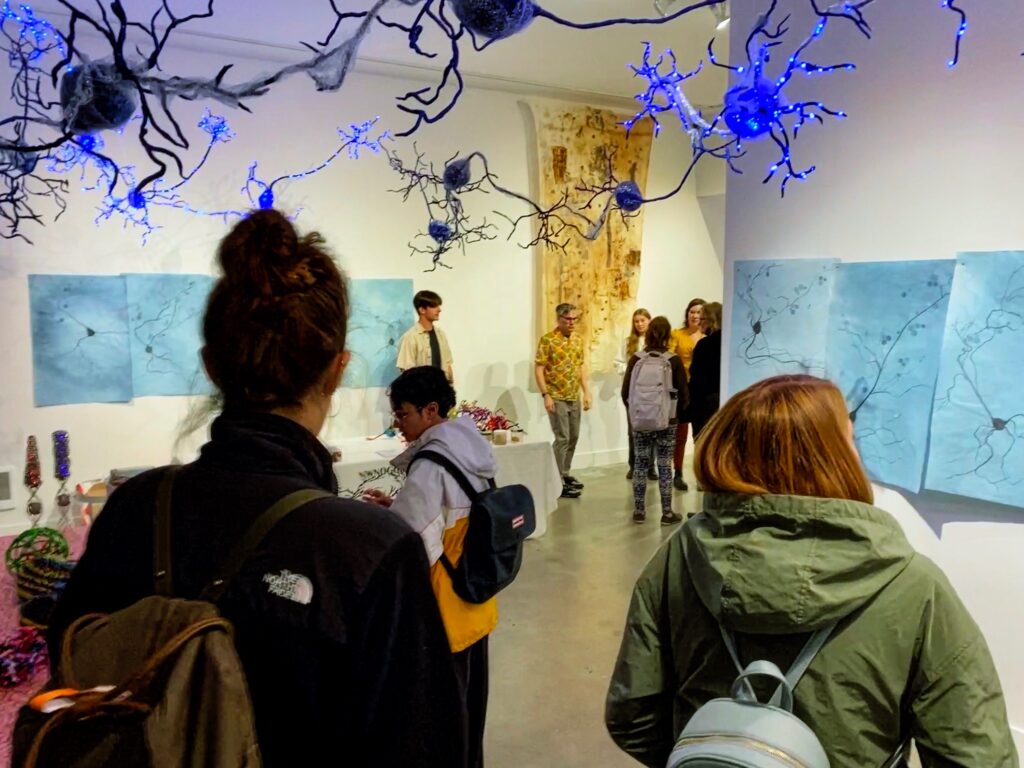
We were thrilled to join celebrated artist and scientist Kindra Crick for an evening of embroidery and brains at PLACE, a gallery housed in a landscape and urban design firm in Northwest Portland.
Embracing Connections
This month our Northwest Noggin volunteers contributed to a workshop exploring brain cell regeneration to complement TextileX’s 2022 theme.
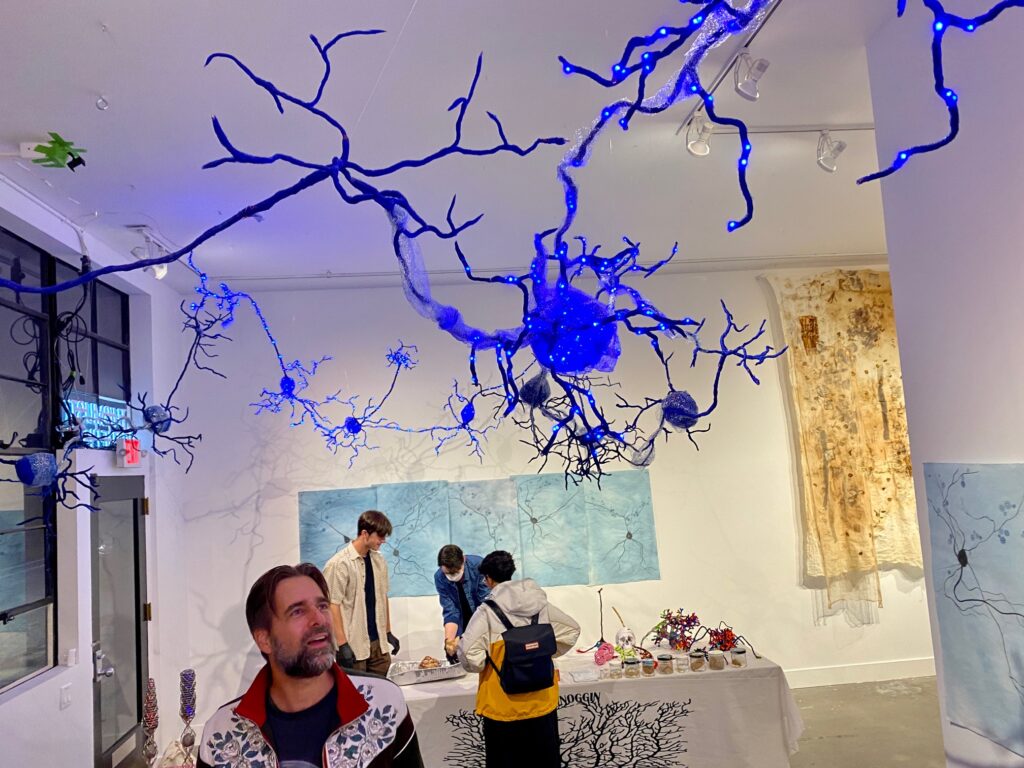
“The human mind with its 86 billion neurons is a resilient force for adaptation and regeneration through its ever-changing landscape of connections. In magnifying and re-imagining these hidden molecular structures, multimedia artist Kindra Crick aims to evoke wonder and offer an imagined vision of the spectacular biological machinery which comprises the very core of our memories, sensations, thoughts and our essential sense of self.”
— Kindra Crick
Volunteers included Marc Chenard, Anna Traylor and Martin Lembke, all undergraduates at Portland State University. Marc, Anna and Martin welcomed PLACE gallery visitors with tables of brain specimens and pipe cleaner cells, under a stunning display of networked neurons created by Kindra Crick.
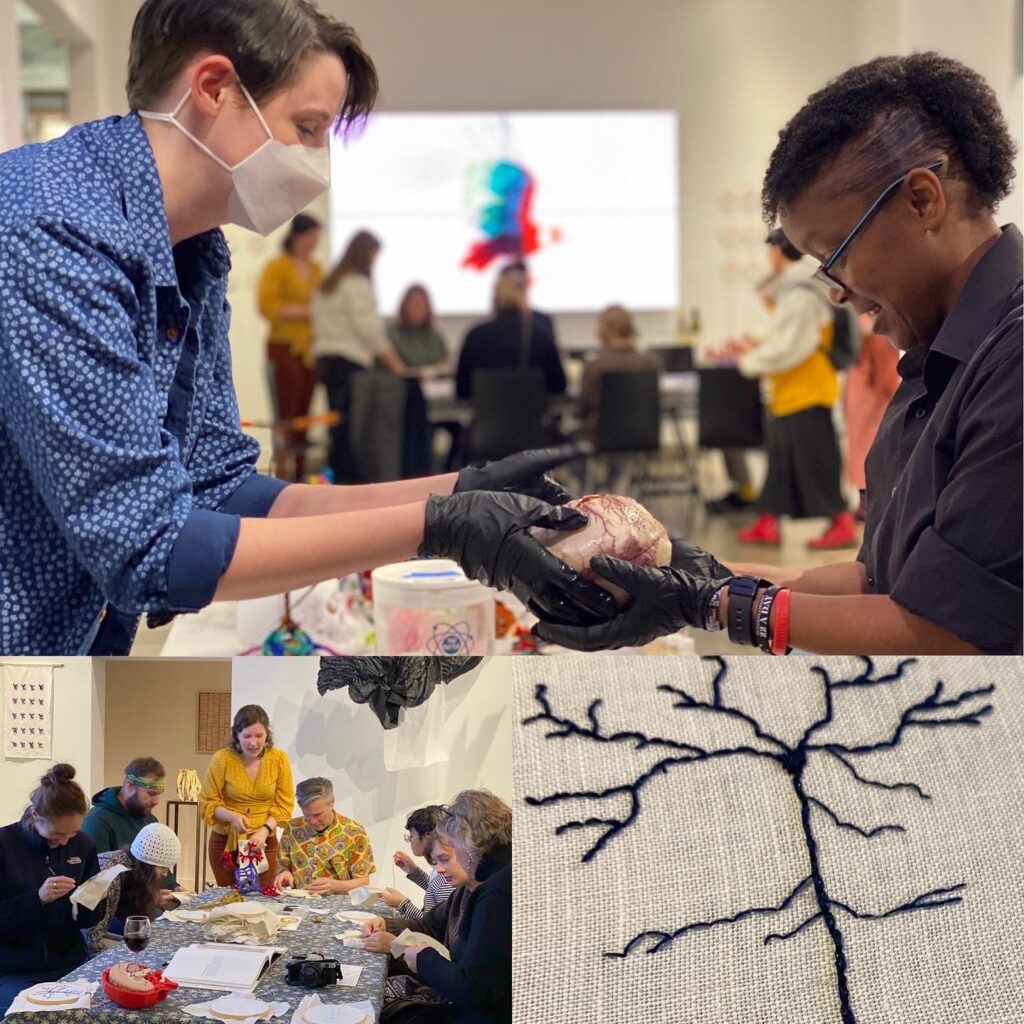
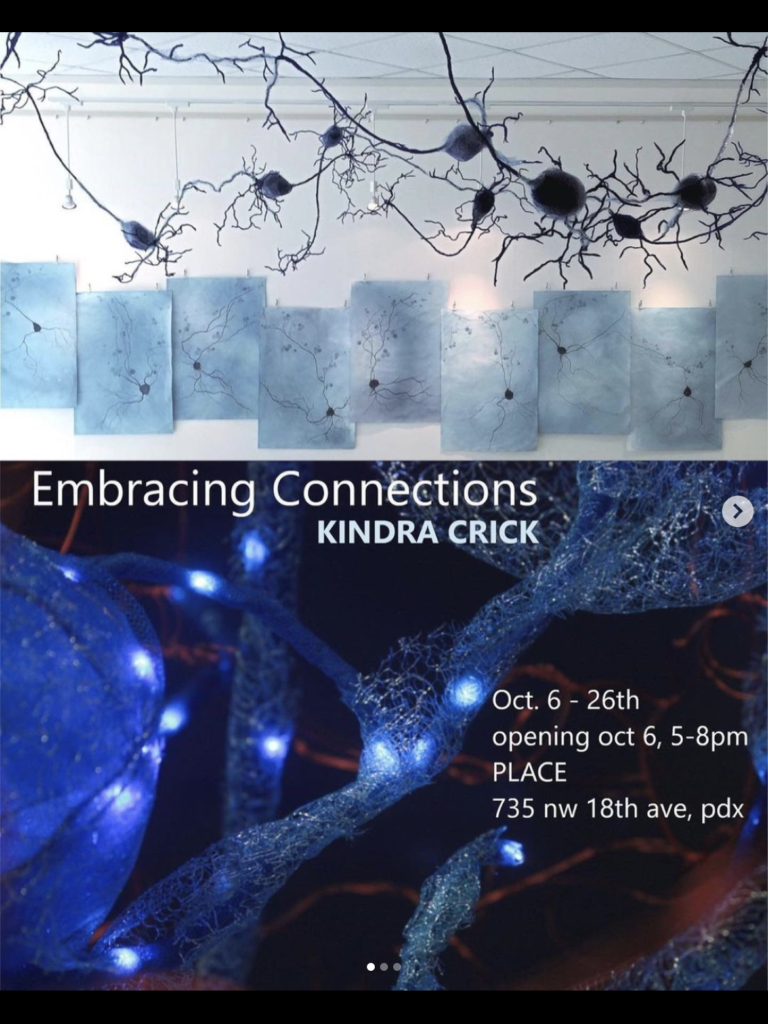
Embroidery and Brains
“The eye that directs a needle in the delicate meshes of embroidery will equally well bisect a star with the spiderweb of the micrometer.”
— Maria Mitchell
Workshop participants examined images of brain cells drawn by eminent artist and neuroanatomist Ramon y Cajal. We each choose a cell we liked, picked up our needles, floss and hoops and enjoyed skilled instruction on how to embroider it into existence from Kindra!
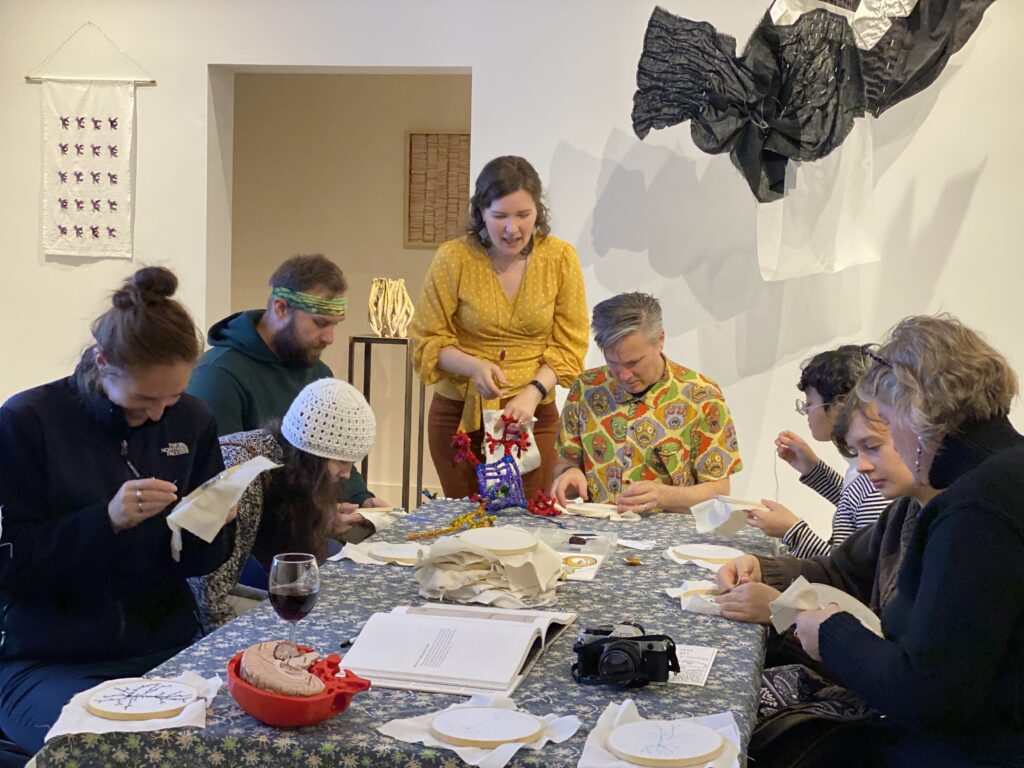
Cajal’s famous drawings are perfect for embroidery, and some striking examples were stitched by volunteers in 2020 as part of the Cajal Embroidery Project, which marked the 100 year anniversary of the Instituto Cajal in Madrid, Spain. The panels were displayed at the virtual Federation of European Neuroscience Societies (FENS) 2020 Forum.
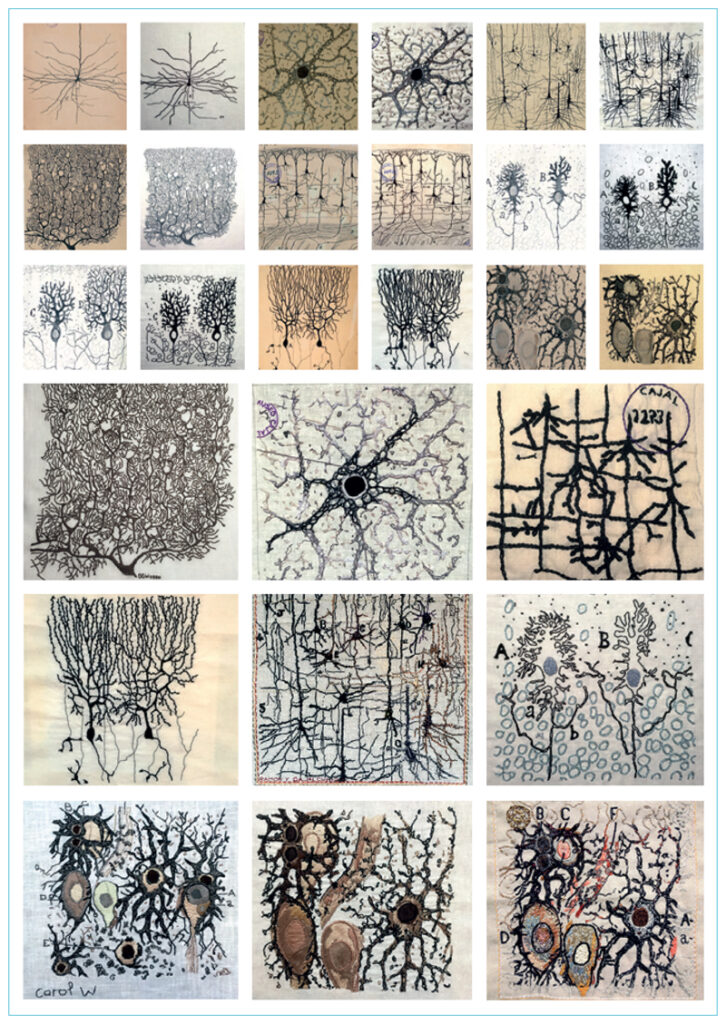
LEARN MORE: The Cajal Embroidery Project: celebrating neuroscience
How to Embroider Your Own Brain Cell
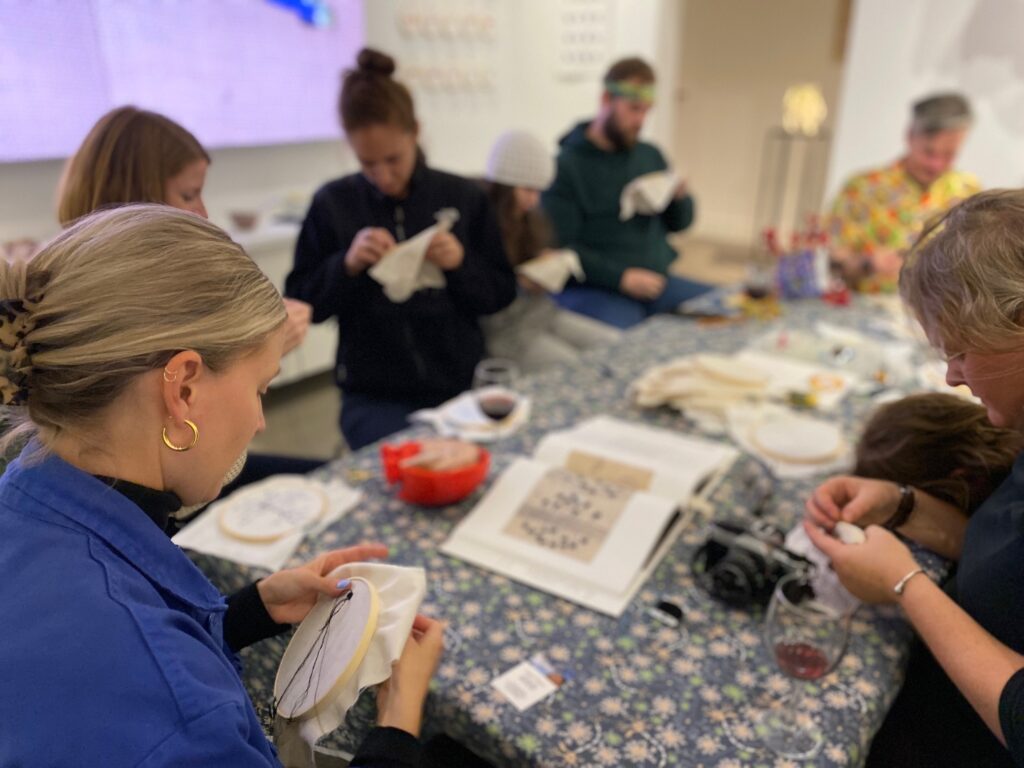
You’ll need:
1. Embroidery hoop (also known as a tambour frame)
2. Embroidery fabric
3. Embroidery fabric or soft pencil (erasable)
4. Embroidery needle with a long oval eye (opening)
5. Embroidery floss (thread) with six strands of thread
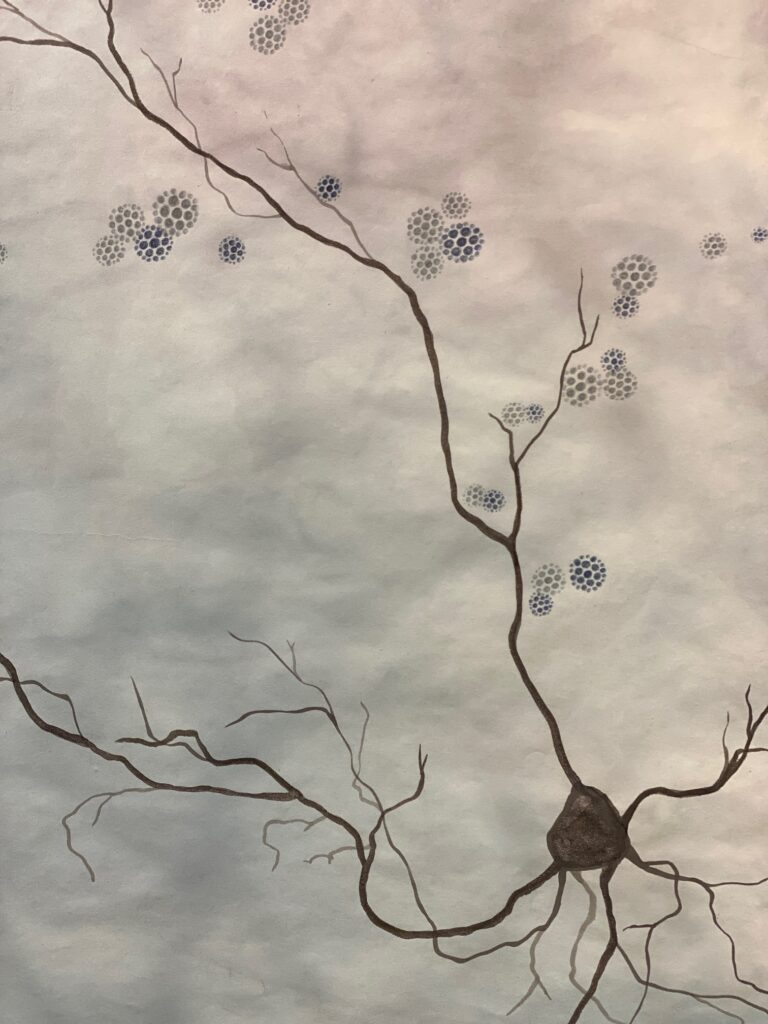
Steps:
1. Attach fabric to hoop between the rings and tighten.
2. Draw your brain cell design directly on the fabric. Will it be a cerebellar granule cell? A pyramidal cell? A cone photoreceptor? Astrocyte? Pseudounipolar afferent? A Purkinje cell (this may take a while)?
3. Cut a piece of embroidery floss about the length of your arm.
4. Decide how many threads you’ll need to stitch with. Embroidery floss typically has six strands of thread, and for many finer dendrites two threads work well. You’ll need to separate the two strands from the remaining four.
5. Thread your needle! Pull the thread through, but make sure you always have uneven lengths. Pay attention to the “tail” end, and keep it about the same length as you stitch. You may either wish to tie a knot at the end of your longer thread to prevent it from coming through the cloth or you can hold about an inch of that thread as you create your first few stitches Start from the back and pull up through your drawn line to begin.
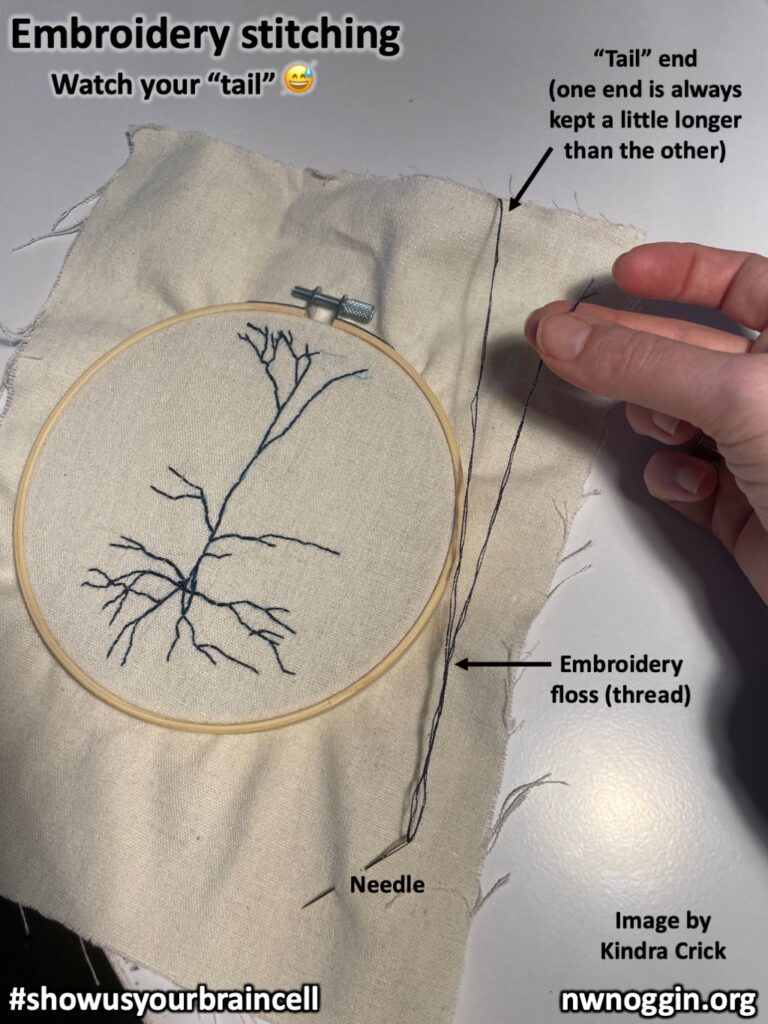
6. For the brain cells we made, we used a back stitch, stitching from the underside of the fabric forward and then returning to the source on the top with thread. There are additional stitch techniques, including the running stitch.
7. Have fun! (but watch your tail : )
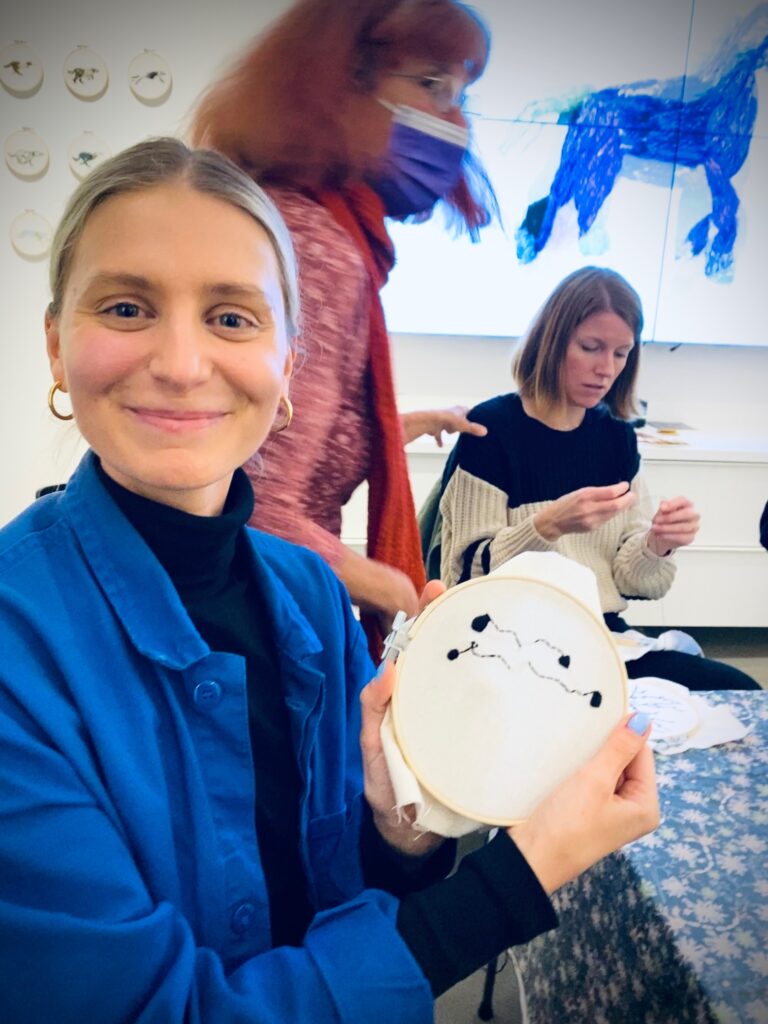
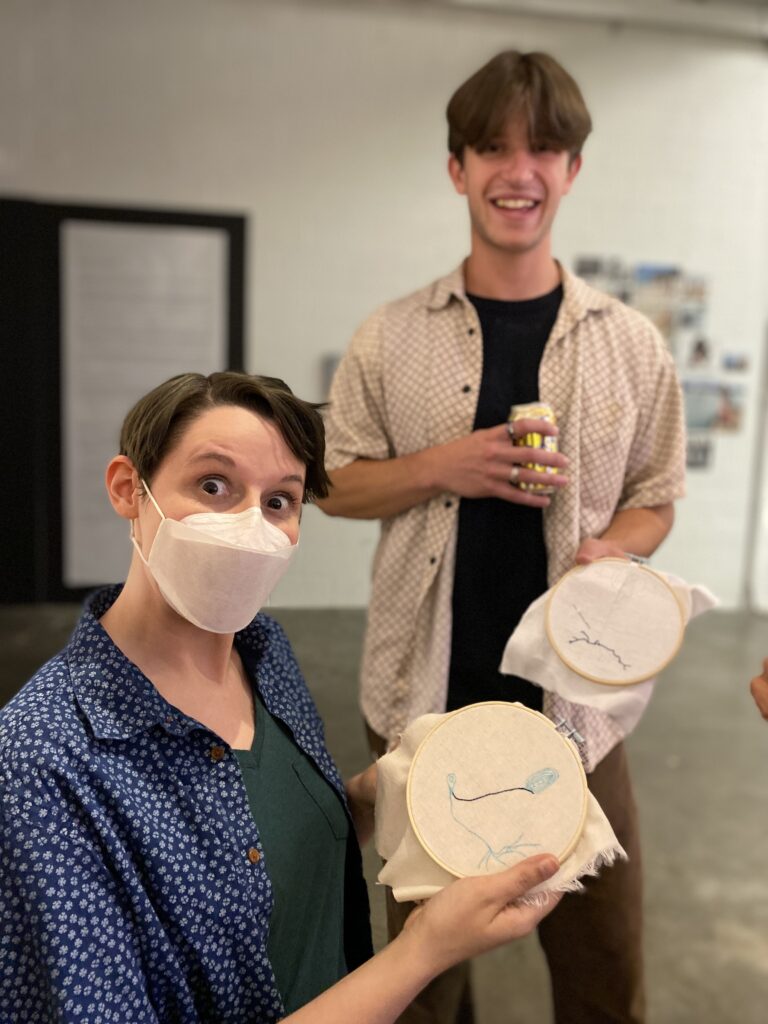
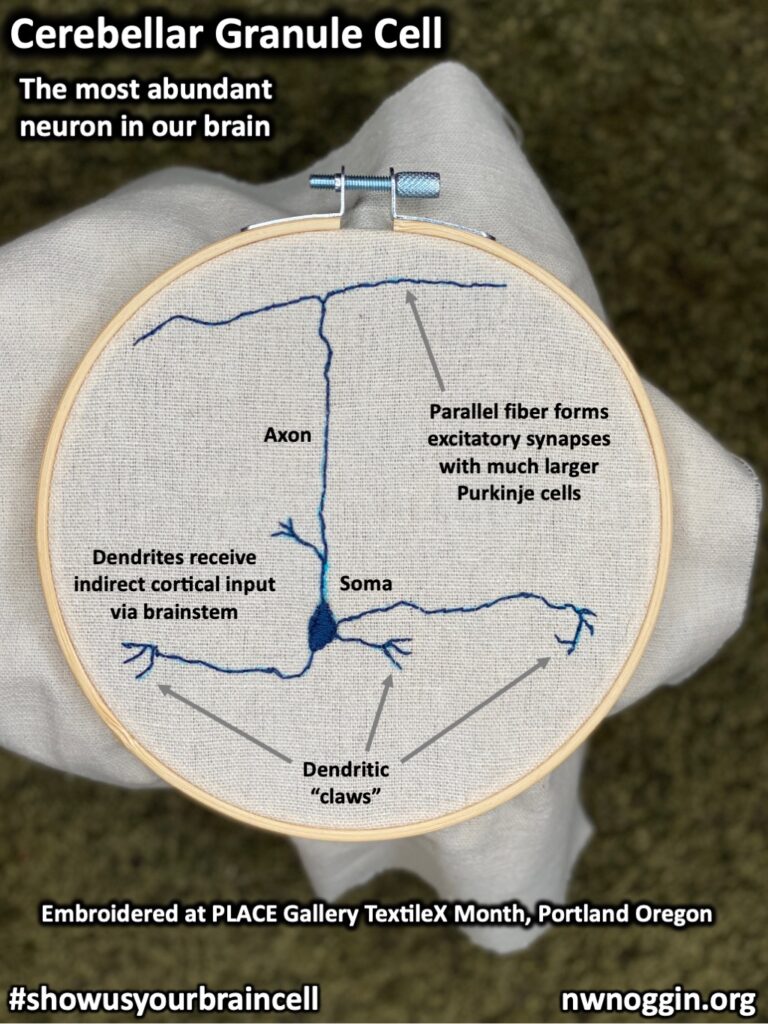
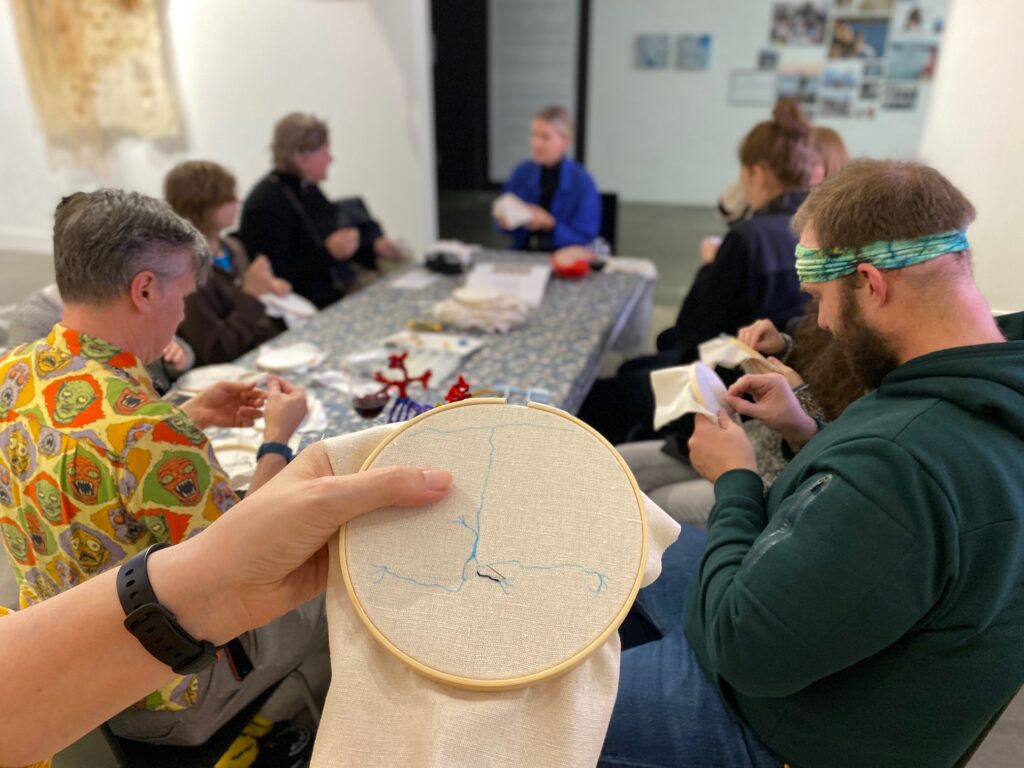
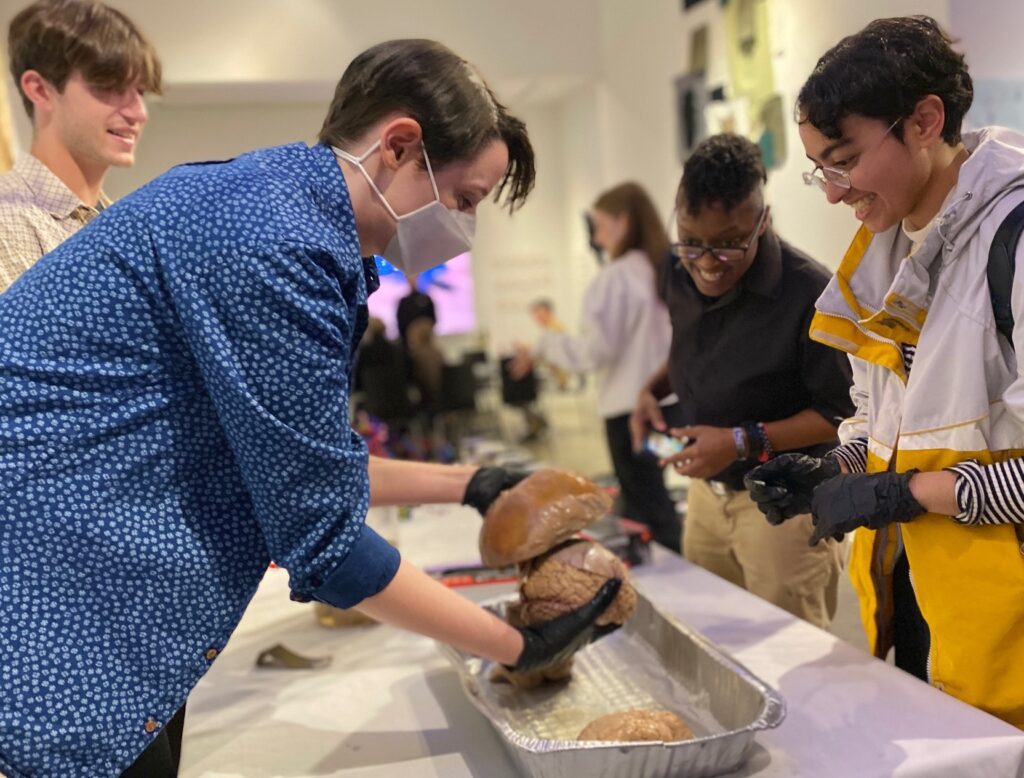
Thank You
Great thanks to artist, scientist and educator Kindra Crick, to PLACE Gallery for generously hosting our workshop, and to Marc, Anna and Martin for contributing their expertise, enthusiasm and art!
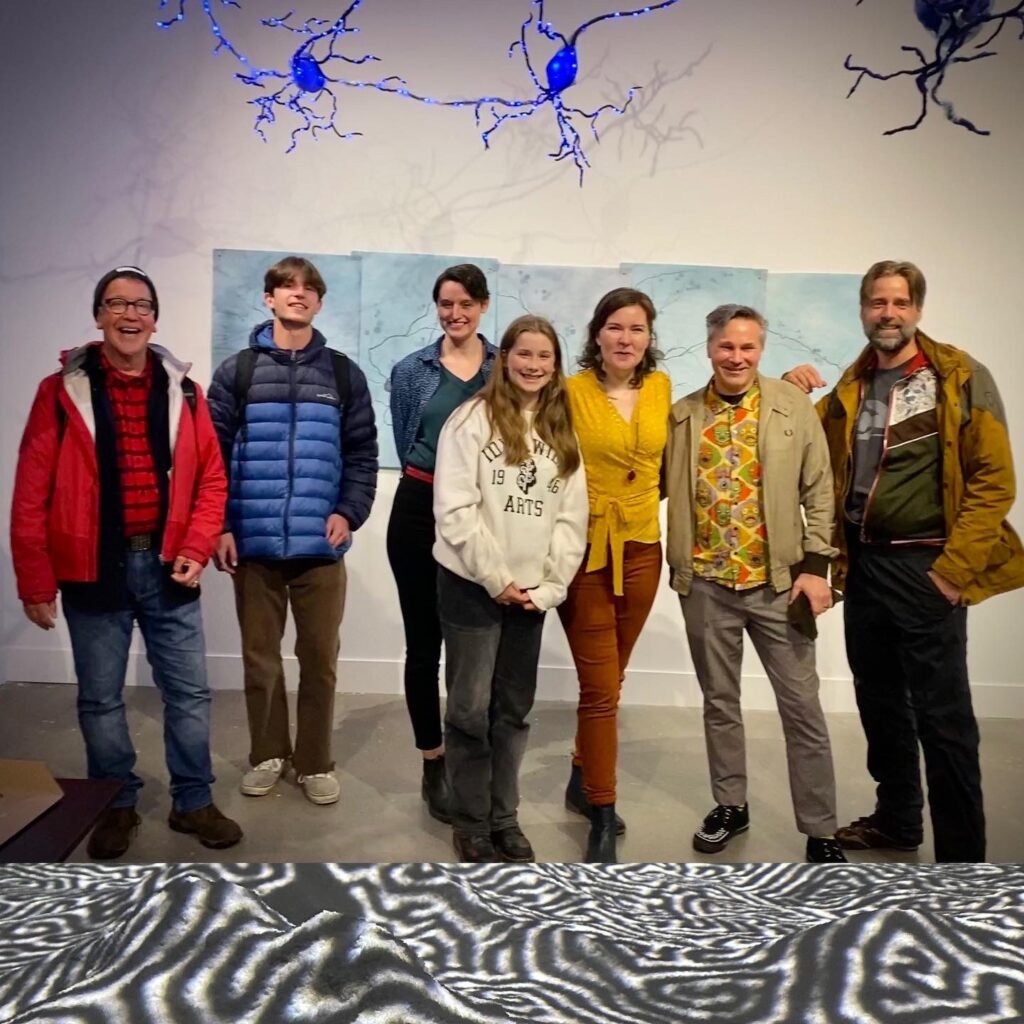
Visit PLACE
PLACE is also featuring artist Motoi Yamamoto, who creates often huge installations with salt.
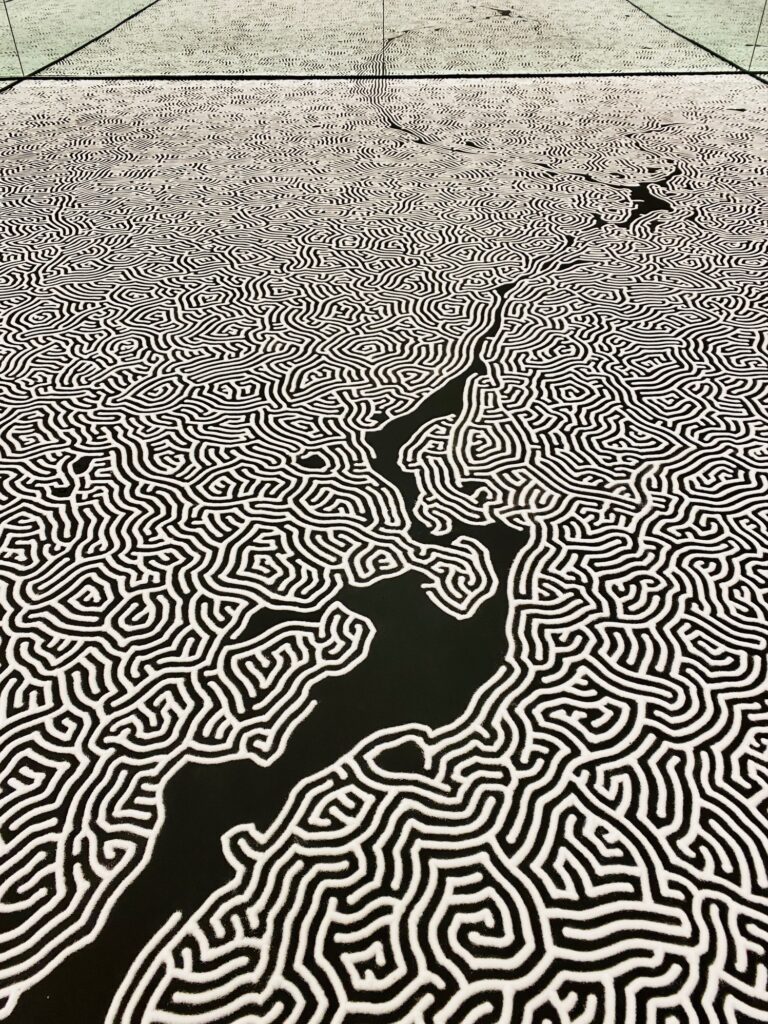
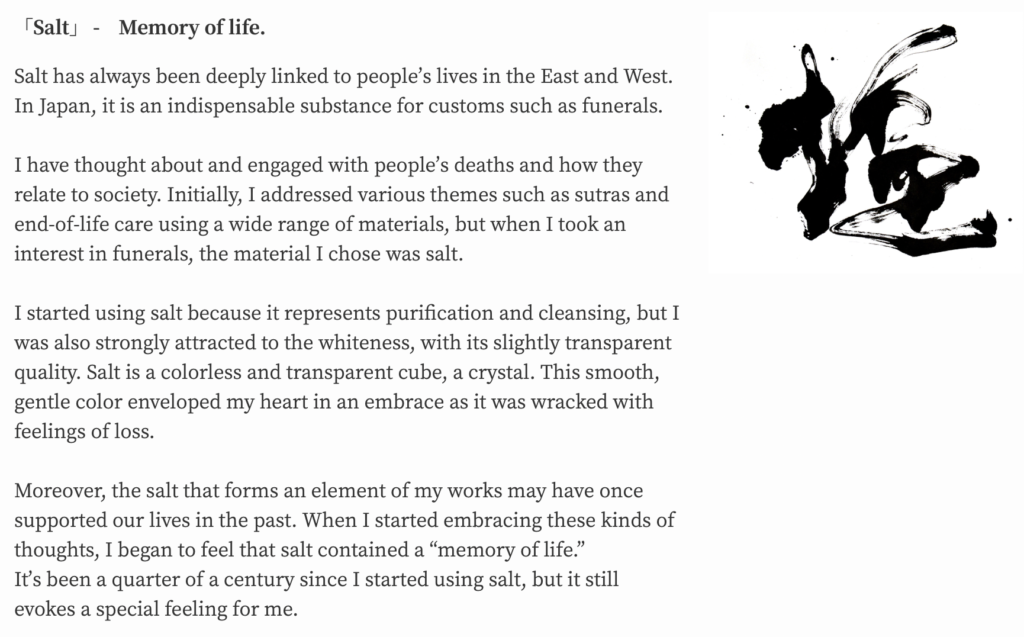
The Motoi Yamamoto exhibit currently runs through December 22, 2022.
LEARN MORE: Now Showing / SOLO EXHIBITION “STAYING IN TIME” (Portland, Oregon)


